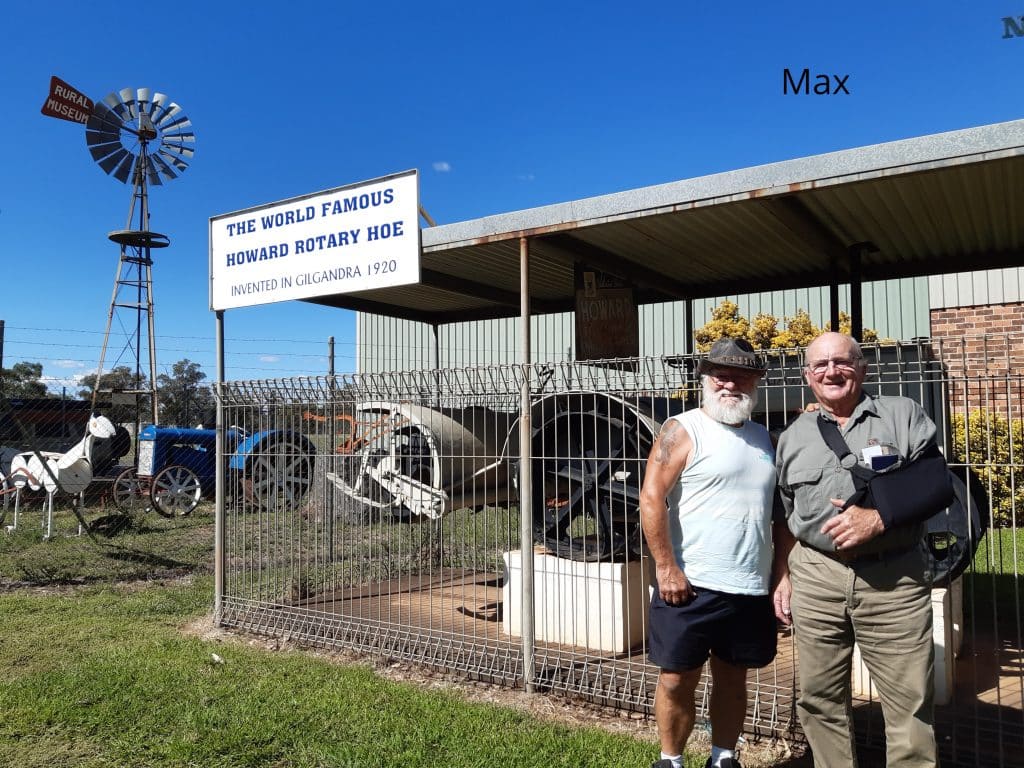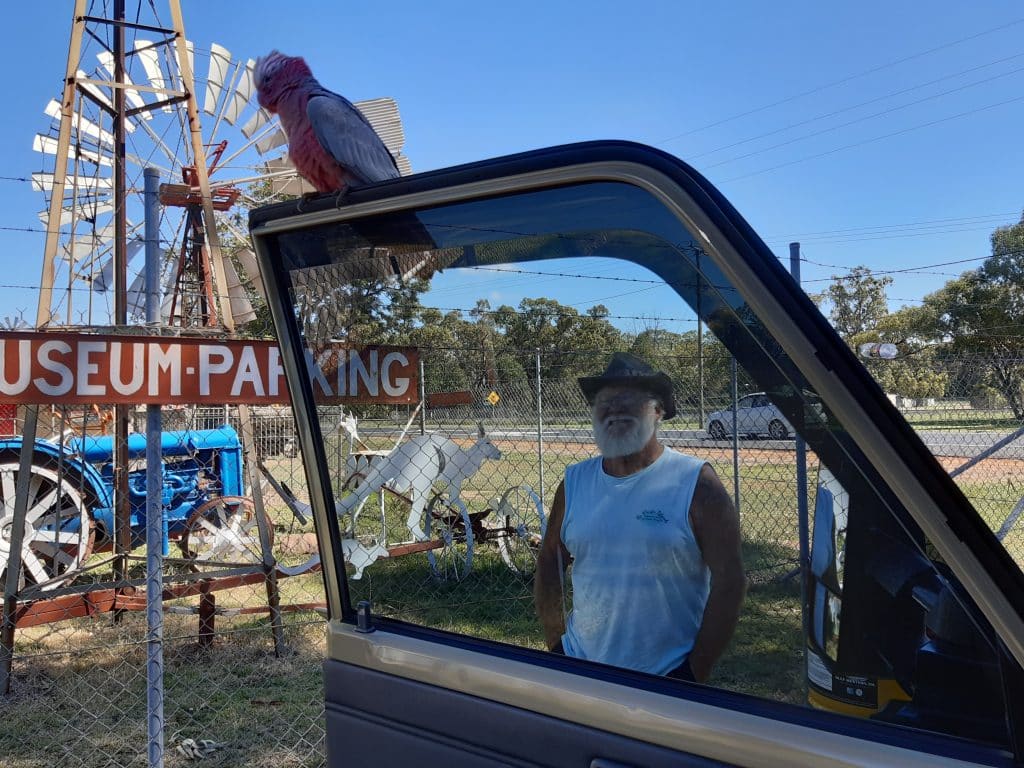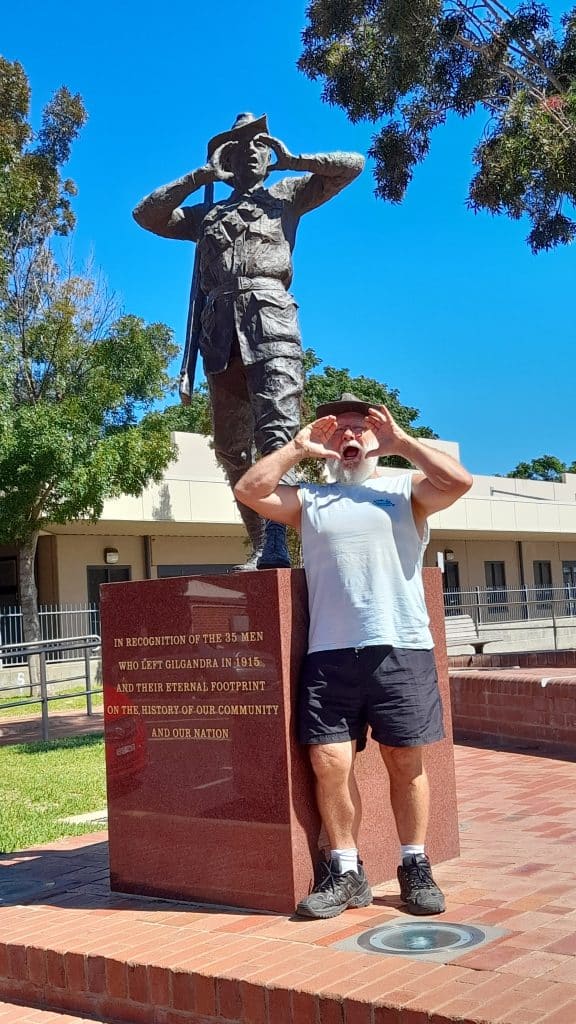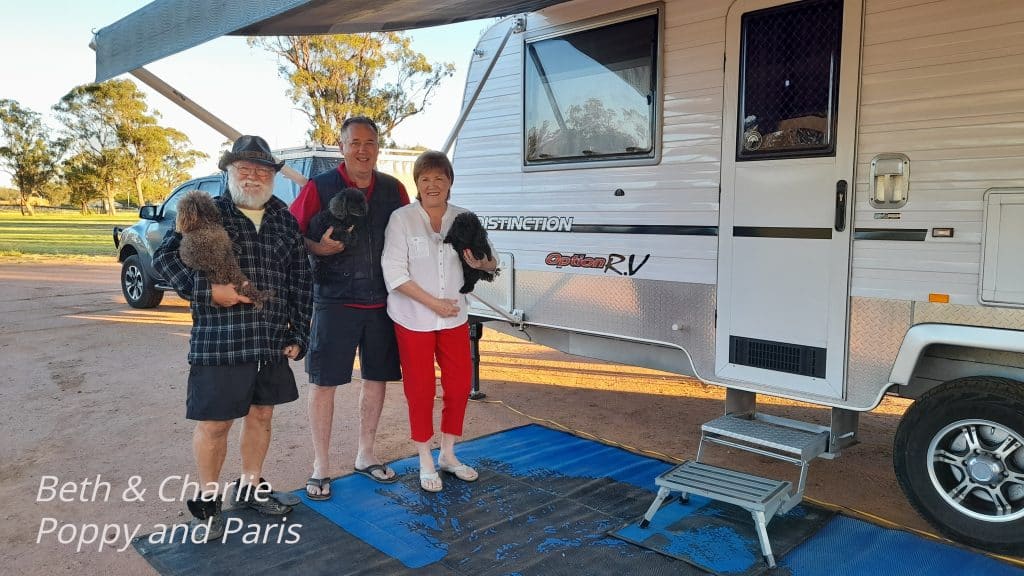Gilgandra has a great museum and worth a visit. Whilst there we chat to Max. He talks us through what’s to see. The museum is open every day except Christmas Day and is on the highway into town. Plenty of parking and entry is only $5.00. You could spend a few hours here going through the different rooms and displays.
While you are here, inspect the Ridley Stripper, Ruston Proctor 1912 Steam Traction Engine, Pfitzner’s 1920 Titan Tractor, Ajax Gas Producer, McKay Harvester and McCormick Deering Tractor and other unique examples of tractors and agricultural equipment used by the pioneers in the Gilgandra District.
In the display room complex, adjacent to the main building you will find a range of collections items including photographs of the local area, musical instruments, and sewing machines from past times. Gilgandra is also known for the many windmills in the area. https://gilgandraruralmuseum.com/


Another famous point of interest in Gilgandra is the Cooee March back in 1915 when a group of men started the walk from Gilgandra to Sydney to enlist in the war. As they reached each town more men joined the line. There is no actual record of names of the men who did the actual march.

We continue our travels and have parked up at Eumungerie camp ground. What a great spot, I did mention about this campground in last weeks post. There is plenty of space, about 10 sites with power and water, space for big rigs, also cold showers and toilets, cleaned daily. The fees are $5 a night unpowered and $10 a night powered. Also dogs allowed as long as its leashed. Whilst here we met a lovely couple who also like us had toy poodles, Poppy and Paris. We started chatting with Beth and Charlie, fellow travellers and we were interested in their caravan. An Option RV Distinction. Phill has an interview with them.
We continue our travels and have parked up at Eumungerie camp ground. What a great spot, I did mention about this campground in last weeks post. There is plenty of space, about 10 sites with power and water, space for big rigs, also cold showers and toilets, cleaned daily. The fees are $5 a night unpowered and $10 a night powered. Also dogs allowed as long as its leashed. Whilst here we met a lovely couple who also like us had toy poodles, Poppy and Paris. We started chatting with Beth and Charlie, fellow travellers and we were interested in their caravan. An Option RV Distinction. Phill has an interview with them.

Phill chats with Ken Wilson from Truck Friendly Caravan Road Safety Program and this weeks topic is 3,2,1. The information detailed below is from Ken’s Facebook page.
Often, we have trucks or other vehicles behind us as we tow our van and want them to overtake but there is often no safe place for them to do so.
You may have noticed some green reflectors on guideposts beside the road on some highways. These indicate that there is a safe place to pull off the road coming up soon so you can indicate or call up your intentions early and be prepared.
Approximately 500 meters from a safe place to pull over you may see 3 x Green reflectors on the standard white guide posts on the side of the road, 250 meters you may see 2 x Green reflectors and just at the safe place you may see 1 x Green reflector.
They give you approx. 1/2 km to slow down and pull over safely, which is plenty of time for any competent and alert driver no matter if you are towing a caravan, driving a motorhome or B Double.
Many say they haven’t seen them. Well, they are out there in several states including Qld, NSW and Vic, but not on all highways.
You do need to be looking for them to notice them.
There is some misleading information out there so what are the facts?
TO CLEAR UP CONFUSION: –
1. They were started by road safety advocate and B Double truck driver Rod Hannifey as an aide for truckdrivers to find a safe place to pull over if tired or to check the load etc. They are now in Qld, NSW and some in Victoria, I believe. I am unaware of any in other states at present. however, they are growing in number and there may be some I am not aware of. Lobby your state Govt if you feel there is a need for them. They are very low cost.
2. They indicate a place is coming up where a driver may be able to pull off the road safely to allow other vehicles to pass. It is not a passing lane but an area off the road to ‘stop’.
3. Most are not regularly maintained, nor bitumen like the ones in the photo, but the location is selected due to the firmness of the ground and visibility etc. Some may have small roadside drop offs and longer grass due to not being regularly maintained. The one in my photo is on the ISIS Highway between Bundaberg and Childers in QLD and a rare bitumen one and has two, one on each side of the highway.
4. They were originally blue reflectors; however, they were changed to GREEN to help avoid confusion with fire services. There are still some original blue reflectors out there that have not been changed, but all new ones should be green in all states.
5. They were at one stage funded, by the NHVR (hence the NHVR reference to heavy vehicle usage on any promotion) to advise heavy vehicle drivers that there is a pull over area coming up in case they needed a short rest or check the load etc. It is hard to pull up a heavy vehicle, so they provide some time to slow before pulling off the road.
6. The brochure on the 3-2-1- Green Reflectors was given to me personally (Truck Friendly caravan road safety program) by a road safety officer with Qld Transport (TMR) to share with caravan users. The reason for this was to help assist and encourage slower vehicles (like caravans, RVs etc.) to pull over to let faster traffic pass and discourage risky behaviour and reduce anxiety, improving road safety.
7. The only real publicity was funded by the NHVR in a brochure which refers to the Heavy Vehicles which they regulate.
8. I have it in writing from QLD TMR that THEY ARE FOR USE BY ALL ROAD USERS and I have previously contacted NSW Roads and Maritime, who advise the same. There are no secrets in road safety.
9. These are not to be confused with signposted ‘Truck only rest areas’, which are restricted to use by ‘trucks’ (Remember ‘Trucks’ carry freight…)
10. Roads, and therefore these areas, are under the authority of the State roads authorities and NOT NHVR. Therefore, the individual State road authorities have jurisdiction over them.
11. Some people advise that they are only for trucks to use. While yes, originally intended for long hall truck drivers, this is NON-LONGER CORRECT, all road users can use them. However we all expect common sense to prevail and give trucks priority, as they are time restricted and need to rest by law. However; no one wants a tired driver on the roads no matter what they drive, so if tired, pull over and have a SHORT rest in one of these bays, and then when rested be on your way to a more suitable place to spend the night. https://www.facebook.com/truckfriendly.com.au/

